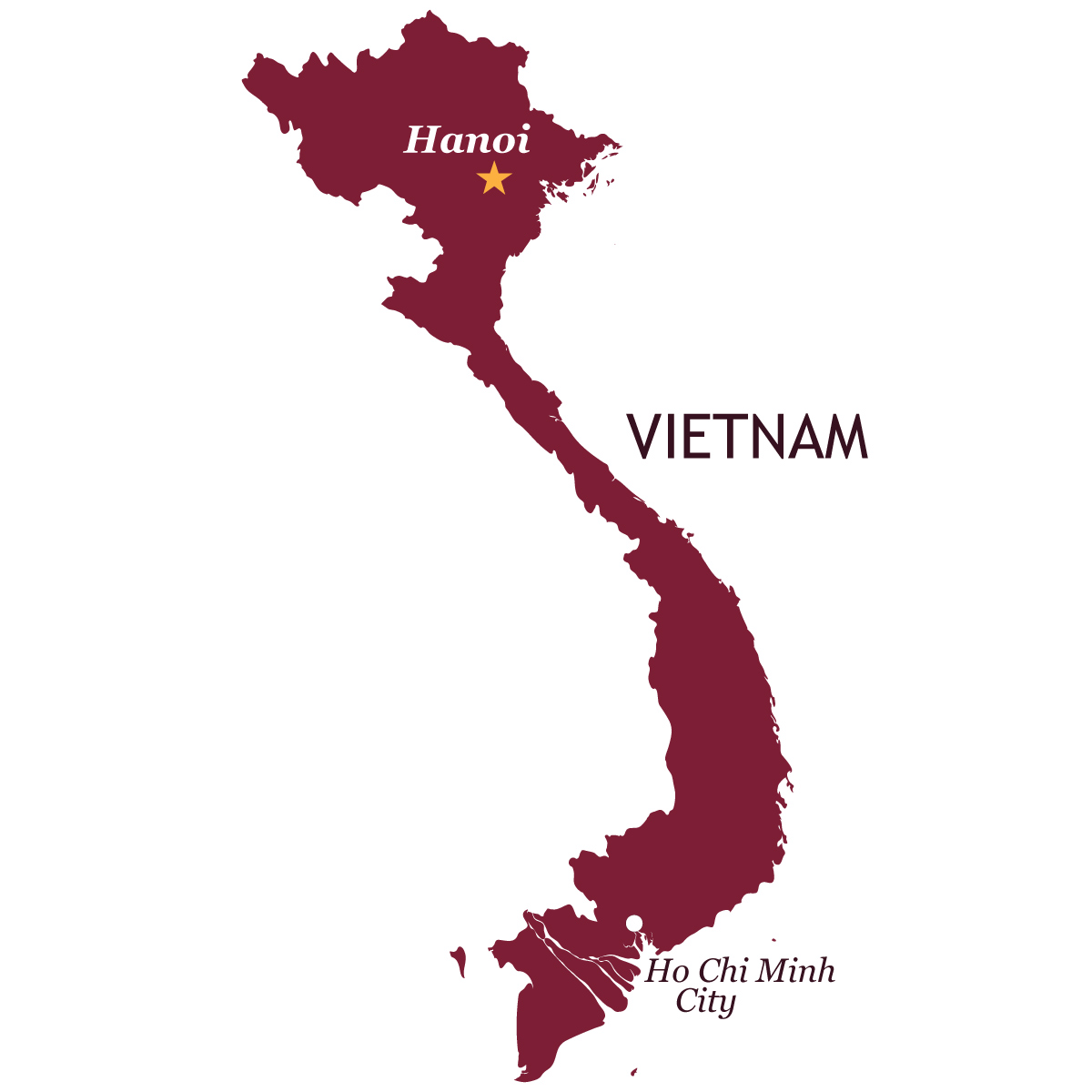
Vietnam
Located in Southeast Asia, Vietnam’s cuisine is incredibly diverse and refreshing. It tells us a story about Vietnam’s nature, philosophy, and history. As the Vietnamese would say: it’s all about balance. Grab your kids and let’s learn about Vietnam!
QUICK STATS

Located on the eastern edge of mainland Southeast Asia, Vietnam borders China to the north, and Laos and Cambodia to the west. It shares maritime borders with Thailand, the Philippines, Indonesia, and Malaysia.
A brief history for kids to learn about Vietnam
The first Vietnamese state was established in 2879 BC, known as the Xích Quỷ kingdom.
After the Han-Nanyue War in 111 BC, China consolidated most of current Northern Vietnam, and it remained under Chinese rule for the next thousand years.
In the 10th century AD, a Vietnamese lord under the name Ngô Quyền defeated the Chinese Han forces. A few years later, the Đại Việt (Great Viet) kingdom was established.
Vietnamese society enjoyed a golden era of a prosperous economy and the development of culture and arts. During this time, Mahayana Buddhism became widely spread around the country.
The Đại Việt kingdom suffered political instabilities in the 16th century, which resulted in frequent infighting between different Vietnamese dynasties. Eventually, Vietnam was divided into the Northern region (ruled by the Trịnh dynasty) and the Southern region (ruled by Nguyễn dynasty).
As the French continued to expand their influence in Southeast Asia in the 19th century, they conquered southern Vietnam in 1862 and Northern Vietnam in 1887, integrating Vietnam into the Union of French Indochina.
The French promoted the export of tobacco, indigo, tea, and coffee, which still contributes to the Vietnamese economy today.
However, the French rule continuously ignored the Vietnamese’s demand for civil rights and self-government. As a result, a Vietnamese rebellion started.
Vietnam in more recent history
The French finally addressed the Vietnamese call for independence in 1930. This resulted in the Yên Bái mutiny, in which some of the political leaders of the Vietnamese movement converted to Communism.
After World War II, the invading powers of the French and Japanese found themselves forceless in Vietnam. This ignited another rebellion of the Vietnamese resistance and the beginning of the First Indochina War, which took place between 1946 and 1954.
After the war, the Allies promised Vietnam independence. However, they required a transitional phase and divided the country into a Northern state, ruled by the socialist party, and a Southern state, ruled by the democratic party.
The Northern state soon commenced what they called the “land reform” act, which resulted in the massacre of around 100,000 people. In the meantime, the South suffered political instability.
The Northern state took advantage of the South’s instability and started to gain control over Southern grounds. As a result, the United States increased its military aid to Southern Vietnam, hoping to oppress the Communist insurgency. These acts eventually ignited the Vietnam War.
The war ended with the fall of Saigon, the Southern capital. The American forces had to withdraw from Vietnam and the country was gradually unified under the Communist Party during the 1970s.

Fun facts about Vietnam for kids
- The motorbike is the most common mode of transport in Vietnam, with more than 45 million motorbikes registered in the country. You will find them everywhere!
- Vietnam is one of the most biodiverse countries in the world, and it is home to 16% of the world’s flora and fauna.
- Halong Bay, one of Vietnam’s most famous tourist destinations, has more islands than people.
Mongolian food
Like many other Southeast Asian cuisines, Vietnamese cuisine is based on an abundance of fresh and local herbs, various sorts of meat preparations, and white rice as the main staple.
Due to millennia of Chinese influence from the north, many Chinese cooking techniques and products, such as rice noodles, wok stir-frying, and dim sum dumplings, are widely spread throughout the country.
French influence on the cuisine is also quite prominent. They introduced baguettes, butter, coffee, and many other “western” products to Vietnamese cuisine.
Vietnamese philosophy is inseparable from its cuisine. This philosophy divides the world into five elements: metal, wood, fire, water, and earth.
In cuisine, each element must be represented in a dish in all dimensions – taste, texture, nutritional value, color, etc. Metal, for example, represents the spicy flavor profile, and contributes a white color to the dish.
This Vietnamese philosophy also emphasizes the balance between Yin and Yang. Thus, a Vietnamese meal set must maintain the balance between cooling and heating dishes, softer and harder textures, raw and cooked ingredients, and so on.
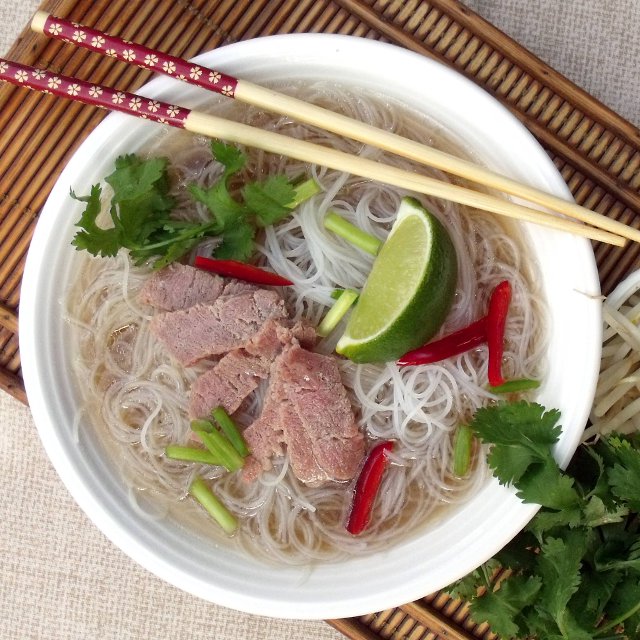
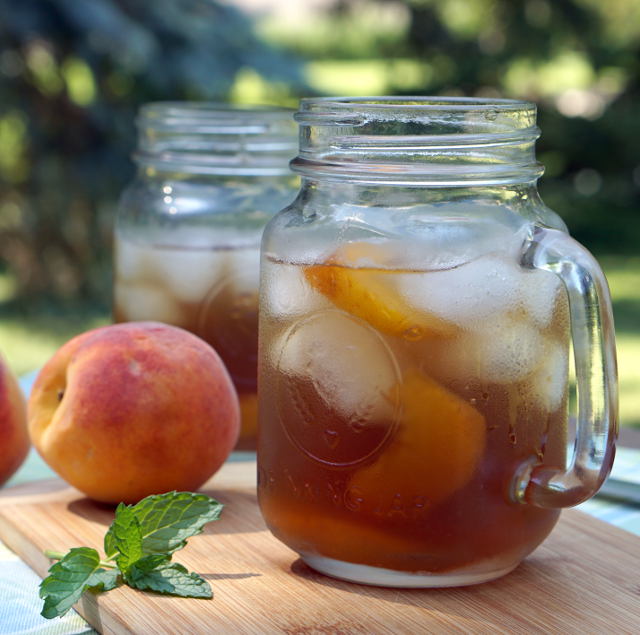

What do the Vietnamese eat? Mealtime in Vietnam.
There is no Vietnamese cuisine without rice. The average Vietnamese person consumes white rice, whether in the form of whole grain, noodles, or porridge 2 to 3 times a day. They serve fresh herbs in abundance alongside each meal.
Hot main dishes will usually include a brothy or soupy element.
Vietnamese coffee has also become quite popular in the recent century. It is prepared by pouring pressed coffee beans, along with hot water, into a glass containing sweet, condensed milk.
Breakfast (bữa sáng) (9am)
The Vietnamese typically prefer noodle soups, such as pho and bún bò huế, for breakfast, as they provide energy for the rest of the day. Sticky rice is another common option. A bahn mi (sandwich) is often the on-the-go choice.
Lunch (bữa trưa) (1pm)
Most Vietnamese people are outside of the home for lunch. They might bring a lunchbox from home, probably containing white rice and some form of stew or stir fry.
However, many people prefer eating at street food stalls or restaurants. Some notable lunch options are bánh mì (‘Vietnamese baguette’) and gỏi cuốn (also known as ‘summer rolls’ or ‘fresh spring rolls’). Bánh xèo (similar to an omelet or a filled crepe) are also common.
Dinner (bữa tối) (6pm-8pm)
This is the main meal of the day. Families gather and share a meal. Dinner is usually a spread of different dishes that balance each other. One would expect to find a stew, a salad, pickles, etc. You will always find steamed rice served on the side.
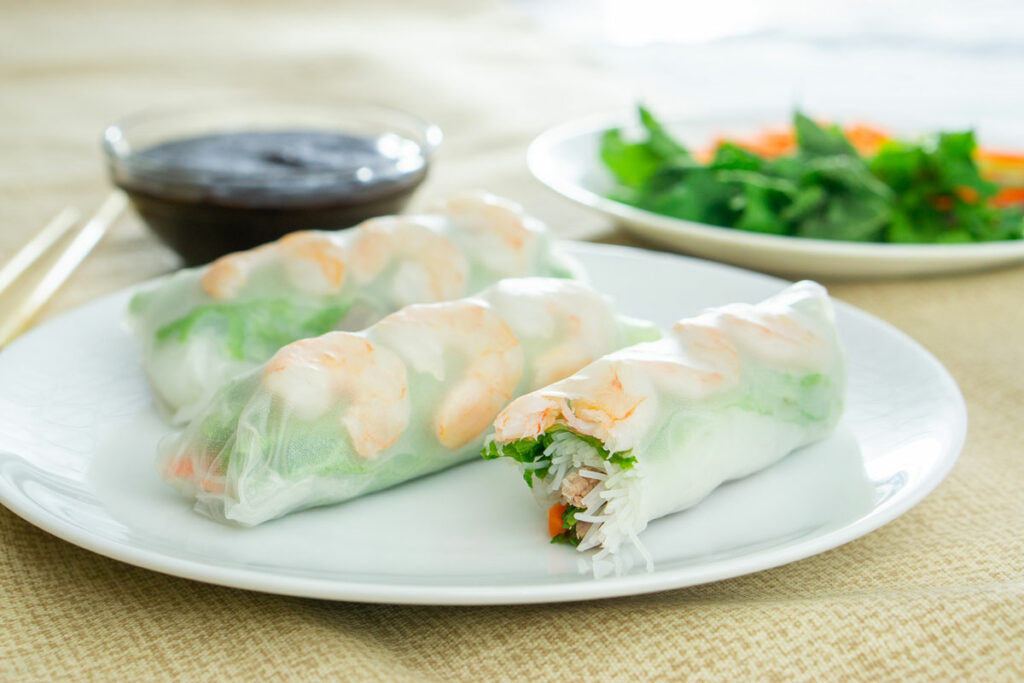
Food etiquette in Vietnam
Since the Vietnamese share many meals with friends and family, there are some noteworthy sharing rules. Eating directly from the serving bowl is considered rude. Everyone gets their own, personal plate to eat from.
Passing dishes with both hands is considered polite.
Vietnamese eating habits are not very different from other cultures. However, it is interesting to note that some dining taboos from the Western world do not exist in Vietnam. For example, holding the rice bowl up to your mouth or keeping your elbows on the table are not problems at all!
Vietnamese food by region
Vietnam is most commonly divided into three regions: north, central, and south. If you’re learning about Vietnam with kids, it may be helpful to take a brief look at each region.
Even with these regional divisions, Vietnamese cuisine is incredibly diverse and holds many other regional culinary traditions, such as Mekong Delta cuisine, Hmong tribal cuisine, and many more.
Feel free to explore further, they are all fascinating!
Northern Cuisine
Northern Vietnam has been influenced by Chinese culinary traditions for years, as well as various tribes, indigenous to the highland area. Due to the colder climate, the cuisine is known for more mellow and gently balanced dishes.
It is home to some of the signature dishes of Vietnamese cuisine, such as bun cha (grilled meatballs and rice vermicelli salad) and pho ga (chicken and rice noodle soup).
Central Cuisine
Central cuisine is probably the spiciest cuisine of all Vietnamese regional cuisines, as most spices are produced in the area. This cuisine is characterized by small dishes that balance each other, along with the influence of Vietnamese Royal Cuisine.
Chilli peppers and shrimp sauces are a few of the most notable ingredients in this cuisine.
Southern Cuisine
An abundance of fresh herbs, vegetables, and fruits can be found in every southern Vietnamese household, thanks to the region’s fertile soil and warm weather.
Fresh coconut milk is commonly used in curries, soups, and desserts. And, indeed, the local people are known for their sweet tooth.
The bánh mì traditional Vietnamese sandwich with many filling options originated in Saigon (modern-day Ho Chi Minh City) in southern Vietnam.
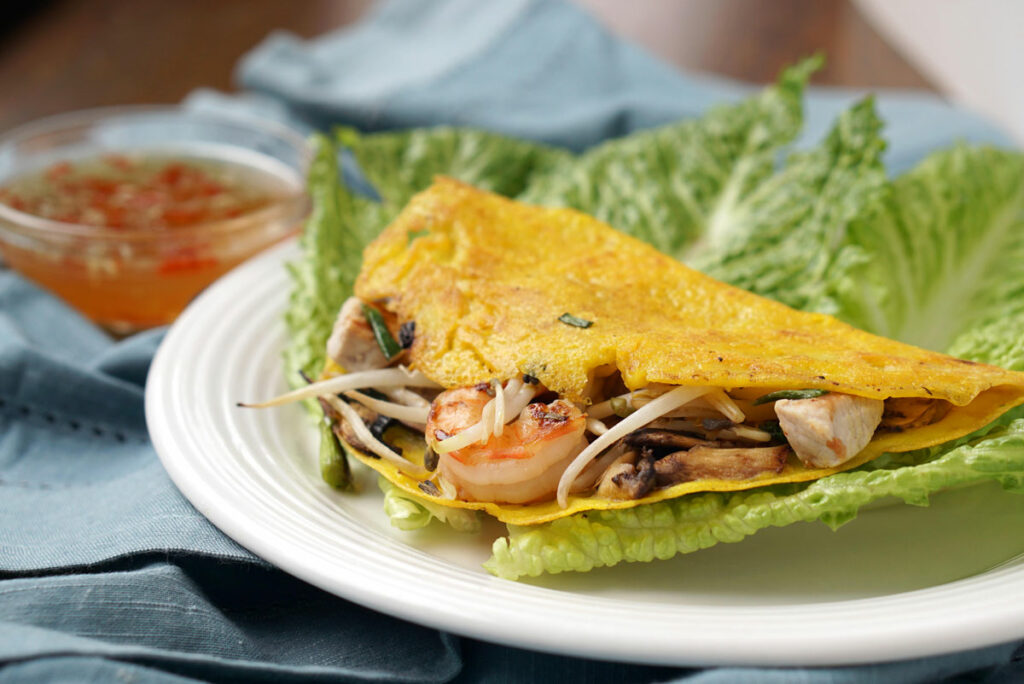
Holidays in Vietnam
Discussing holidays can be an engaging way for kids to learn about Vietnam!
Tết (Lunar New Year, late January)
Tết, is one of the most important holidays in Vietnamese culture. All schools and workplaces are closed. Families gather in local temples and pray for a good year. After, they enjoy a delicious feast!
According to Vietnamese tradition, the first person to visit a house in the new year sets the fortune for the family for the year. As such, families take great care in choosing who they will invite to be their first guest of the year.
In particular, the first three days of the new year are spent visiting friends and family. Guests bring “lucky money” (Li Xi) to children which represents hopes for their future.
One of the most enjoyed snacks for Tết is bánh tét — or Tết cake — which is sticky rice, mung bean, and pork, boiled inside a leaf.
Fruit, fresh and dried, is a staple at every home’s celebration, as fruit is a symbol of a fertile coming year.
Ghost Festival (July 15th)
The Ghost Festival, or Hungry Ghost Festival, is a traditional Taoist and Buddhist festival. The month of July, according to Vietnamese folklore, is the time when homeless, wandering souls are especially hungry and dissatisfied, and might bring bad luck to the living and curse them.
Thus, every year, on July 15th, the Vietnamese people make offerings of food and clothes for the wandering souls, as well as burn votive papers for them.
National Independence Day (September 2nd)
On September 2, 1945, Ho Chi Minh declared the independence of Vietnam from French rule. Every year, on this day, the Vietnamese hold parades and festivals all around the country, especially in the urban areas of Hanoi and Ho Chi Minh City.

At-home ideas for kids to learn about Vietnam
As a part of your homeschool Vietnam unit study or as a supplement to your child’s Asia unit at school, try some of these ideas at home!
- Invite your friends over and roll some Vietnamese summer rolls together. Kids of all ages can get involved in making these!
- The Vietnamese philosophy divides the world into five elements: metal, wood, fire, water, and earth. Choose your favorite dish (it doesn’t have to be Vietnamese) and discuss how you see the elements in that dish.
- Water puppetry is a unique Vietnamese tradition that dates back to the 11th century. Find a video online and substitute Family Movie Night with a Vietnamese Theater Night, this is truly fascinating!
And, if you feel extra creative, you can make your own Vietnamese wooden puppet! - The book Vietnam ABCs by Theresa Alberti is a great read-aloud for diving more into some elements of Vietnamese culture, particularly for younger students.
- Use Language Drops to learn a few words in Vietnamese or Word Hippo to look up the pronunciation of specific words.

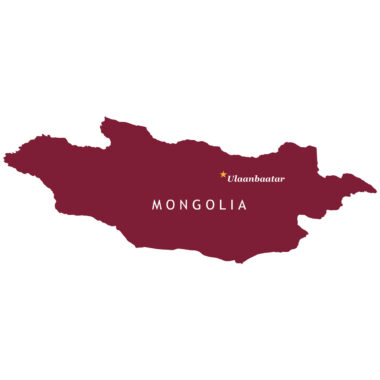
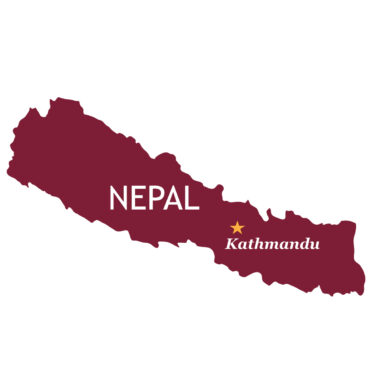
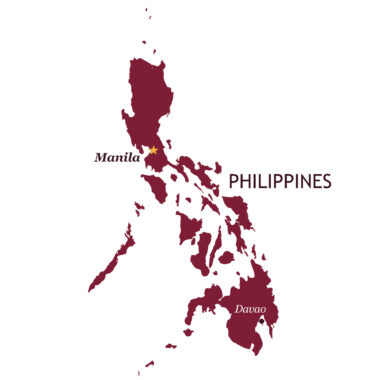


Have a Question/Comment?